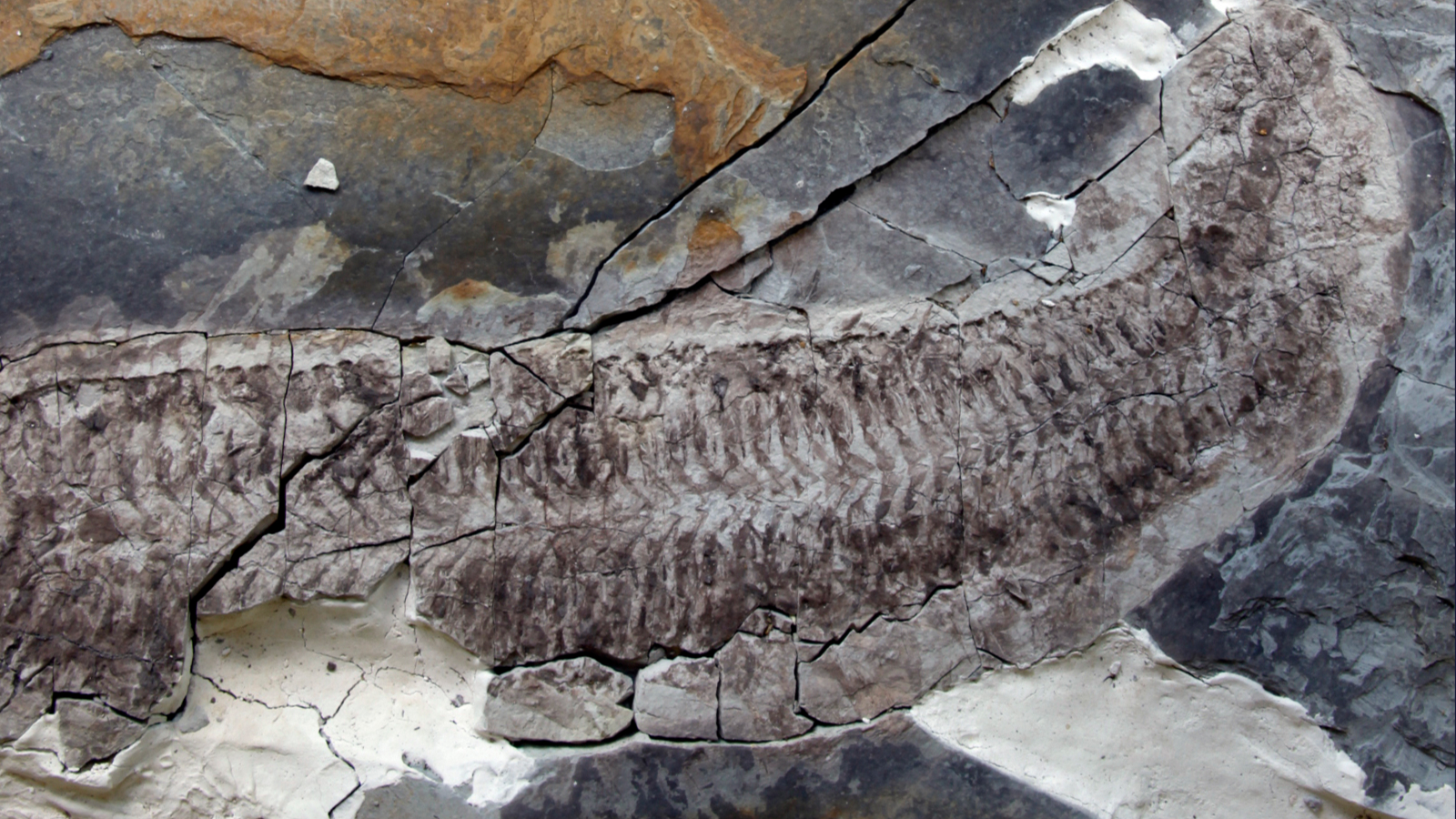www.popsci.com
We may earn revenue from the products available on this page and participate in affiliate programs. Learn more Tony WareMost people probably look for a gas generator as the easiest way to get backup power in a pinch, but a dual-fuel generatorwhich can run on gas or propaneprovides a more flexible alternative. With two ways to power your generator, you have more options when fuel is in short supply (in conditions like a hurricane). Dual-fuel generators also give you more control over secondary factors like noise and emissions: Gas is easy to get at any station, but propane burns cleaner and quieter. The best dual-fuel generators not only offer the best of both worlds but also come equipped with slew of slick features to make your user experience easy and safe.Best overall: DuroMax XP12000EHBest portable: Westinghouse iGen4500DFBest electric start: Wen DF1100XBest budget: DuroMax Duro Star DS5500EHAlso worth considering: Champion Power Equipment 7,500-watt dual fuel generatorHow we chose the best dual-fuel generatorsAs a tech enthusiast and camping addict, Ive looked at a wide range of portable power stations and related accessoriessuch as the Goal Zero Yeti 1000 Core portable generator and the best home wind turbinesfor the likes of Popular Science, Scientific American, The Daily Beast, and more. (And if youre looking for things to do with all that power, consider charging one of the best ebikes Ive written about.) Ive researched each of these dual-fuel generators extensively via a combination of first-hand trials, input from experts, and reviews from real-world consumers.The best dual-fuel generators: Reviews & RecommendationsOur favorite dual-fuel inverter generators span a range of purposes. Some are designed as reliable backup power sources for an entire home. Others are small and portable, giving you just enough juice for a camping trip or short blackout. Our list features generators of all shapes and sizes, so you can find something that suits your needs and budget.Best overall: DuroMax XP12000EHBest overallPlenty of JuiceThe DuroMax XP12000EH delivers plenty of power for any purpose.ProsSolid outputOutstanding build qualityPower Boost for bigger appliances and RVsWheel kit includedConsVery heavyExpensiveSome owners report limited customer service supportSpecsRated output:9,500WPeak output:12,000WGas tank capacity:8.3 gallonsWeight:238 lbsVolume:74 dBStarter:Electric and pullBuy it used or refurbished: eBayWhy it made the cut: With its high output and heavy-duty build quality, the DuroMax XP12000EH will keep the lights on and more.The DuroMax XP12000EH is a true workhorse of a dual-fuel generator. With a steady output of 9,500W, its more than powerful enough to provide electricity to an entire home, and its 12,000W peak output allows it to provide extra power if theres suddenly a much larger need. It also has a large 8.3-gallon gas tank so that it can run for a long time on petrol alone.Whats more, XP12000EH has a reputation for providing outstanding reliability. It was built for rugged uses, like on a work site, and its all-metal construction ensures that it can handle a bit of roughhousing. All that metal and gas capacity means its very heavy, though. At 238 pounds, you wont be moving this around a lot, and forget about taking it camping. But it comes with a wheel kit, which may help ease the load over short distances.truction quality is clearly solid. Again, the gas tank is pretty small, but thats actually an advantage in this case.Best portable: Westinghouse iGen4500DFBest portablePower You Can Carry With YouThe Westinghouse iGen4500DF packs more power into a relatively portable package.ProsHighly portablePlenty of power outputQuietSolid constructionConsExpensiveHeavy for a portable generatorSpecsRated output:3,700WPeak output:4,500WGas tank capacity:3.4 gallonsWeight:104.7 lbsVolume:52 dBStarter:ElectricBuy it used or refurbished: eBayWhy it made the cut: If you need to take plenty of power camping or to the job site, the Westinghouse iGen4500DF is a great choice.If you need lots of power and the ability to move your generator around, the Westinghouse iGen4500DF is the best semi-portable option we know of. Its slightly larger than our best small pick and almost twice as heavy. Still, its significantly more compact and portable than most dual-fuel generators, with a similar 3,700-4,500W output. Thats plenty of power for a large camping expedition, an RV, or a work site.Best electric start: Wen DF1100XBest electric startElectric Start and StopThe Wen DF1100X is smart and safe.ProsPlenty of power outputCO2 shutdown safety sensorRelatively quietConsExpensiveHeavySpecsRated output:8,300WPeak output:11,000WGas tank capacity:6.6 gallonsWeight:213.8 lbsVolume:72 dBStarter:ElectricWhy it made the cut: For an easy startup and lots of safety features, check out the Wen DF1100X.It isnt all that uncommon for a dual-fuel generator to have an electric start switchall of the recommendations on this list have them, either solely or alongside a pull cord. The Wen DF1100X sets itself apart with an automatic stop mechanism that can cut power in an emergency.The Wen DF1100X comes in several packages. However, we specifically recommend the model with a built-in CO2 shutdown sensor, which is important if you run the generator in a garage or otherwise poorly ventilated space.With a hefty 8,300-11,000W output, above-average gas capacity, and a relatively low operating volume, the Wen DF1100X is a generator powerhouse. Its both expensive and heavy, but if youre looking for an easy-on, safety-off option, its a solid investment.Best budget: DuroMax Duro Star DS5500EHBest budgetSolid Power, Lower PriceThe DuroMax Duro Star DS5500EH offers plenty of power at a lower price.ProsSolid output for priceOutstanding build qualityRelatively portableConsNot powerful enough for an entire homeSome owners report limited customer service supportSpecsRated output:4,500WPeak output:5,500WGas tank capacity:3.9 gallonsWeight:124 lbsVolume:69 dBStarter:Electric and pullWhy it made the cut: With its relatively high output, relatively low price, and solid construction, the Duro Star DS5500EH is a solid budget-conscious pick.The DuroMax Duro Star DS5500EH is effectively a smaller, more affordable version of our best overall pick. At just under half the price of the DuroMax XP12000EH, the Duro Star DS5500EH delivers about half the power. A 4,500W generator gives you plenty of power if youre charging up an RV, topping off power tools at a work site, or keeping key appliances on during a power outage.At just over 100 pounds, its not exactly light, but its also not so heavy that you cant get it around. It wouldnt take too much wrangling to bring it camping, especially thanks to the inclusion of wheels.Champion Power Equipment 7,500-watt dual fuel generatorProsPlenty of power for big jobs or long run timesUp to 10 hours runtime on gas or 5.5 on propaneLots of connectivity: 120V 30A RV Locking Outlet (L5-30R), 120/240V 30A RV Locking Outlet (L14-30R), (2) Two GFCI 120V 20A Household OutletsSturdy wheelsConsBig and heavyLoudSpecsRated output:7,500WPeak output:9,375WGas tank capacity:7.7 gallonsWeight:205 lbsVolume:74 dBStarter:Electric and pullWhy it made the cut: You can often find this powerful dual-fuel generator at a deep discountits regularly sub-$1,000 but sometimes dips far below that mark.When it comes to pure power-to-price ratio, this Champion offering makes a solid showing. It weighs just over 200 pounds and contains a 439cc 4-stroke engine. When running on gasoline, it produces 9,375 starting watts and 7,500 running watts. On propane, it churns 8,400 starting watts and 6,750 running watts. Thats plenty of power for even large jobs or whole-home backup in an emergency. Despite its size and weight, its relatively easy to move around thanks to sturdy integrated wheels. It starts easily with an electric system, but it also has a recoil option for use in a pinch. What to consider when buying a dual-fuel generatorWhile there are plenty of dual-fuel generators on the market, they arent cheap, and many of them simply arent worth the investment. Some are poorly made and dont last long. Others dont deliver reliable performance, so they may not work when the lights go out. To make a wise purchase, you should keep a few things in mind to judge whether a generator is worth the cost. When it comes to connectivity, it offers ample ports. They include a 120V 30A RV Locking Outlet (L5-30R), 120/240V 30A RV Locking Outlet (L14-30R), and a pair of Two GFCI 120V 20A household outlets. Power outputSimply put, if a generator cant give you enough power to meet your needs, it isnt worth buying. Manufacturers usually provide two numbers, both measured in watts (W), which will help you understand how much power a generator produces. First, a generators Rated output tells you how much power it produces at any given moment. Second, many generators also have a peak output spec, which refers to the maximum amount of power that a particular unit can handle blasting out in a short burst. This comes in handy if you plan to turn appliances on and off, which can cause sudden surges of electrical draw.Ideally, you want a generator with a rated output equal to your typical power needs. If youre simply looking to power and recharge a handful of devices alongside a simple appliance or two, 1,500W-2,000W might be all you need. If you are turning a lot of random power tools on and off, or powering an RV, look for something around 4,000W. However, if youre looking to power a house, youll likely need at least 8,000W or more.Fuel capacityWith petrol and propane, dual-fuel generators can keep the power going longer than most single-fuel power solutions. Of course, that depends on how much fuel you have in your tanks. Most dual-fuel generator gas tanks run between 2 and 10 gallons, which is pretty typical of single-fuel generators that run solely on gas. Propane is almost always stored in separate pressurized gas canisters that are attached via a hose, exactly like you would a propane grill. So the propane capacity depends on the size of your canister rather than the generator itself.In both cases, though, you should keep in mind that more storage means more weight. If youre looking for a portable generator, youll want to balance those two factors. If youre buying a generator to back up your homes power and plan to leave the generator in one place, weigh it down as much as you like.Starting typeDual-fuel generators use one of two starting mechanisms: either a recoil cord or an electric starter. With a cord, you pull the handle hard and fast to produce the rotation necessary to fire the generator. It requires more physical effort but tends to be more reliable. An electric starter is a push-button solutionno exertion is required, but it only works when its internal battery is charged.Operating noiseGenerators are pretty loud, which can be a nuisance if you keep one (or more) in or near your home. Generators tend to get louder as they generate more power. (There are exceptions, though.) If youre going to keep your generator around your house or run it while camping in a quiet spot, you will want to keep the noise to a minimum.Typically speaking (but not always), higher-quality generators manage to turn the volume down thanks to the use of thick shielding and other design elements. If your priority is pure power, though, you may simply have to put up with the noise or find another way to minimize it.Dual-fuel generators give you the advantage of running propane, which generators process more quietly than gas. Most dual-fuel generators produce between 50 dB (roughly the same as a refrigerator) and 90 dB (about the same as a small-engine motorcycle).Size, weight, and featuresThere may be other logistical considerations youll want to keep in mind based on your specific needs and setup, such as the specific dimensions of the generator and how much it weighs. If your generator sits at home for backup power, size, and weight might not be much of an issue. For mobile uses like camping or worksites, however, you will want something you can move without too much strain.There are also several physical features for transportation that are common but not universal, like wheels or a lift hook bar to hook onto a crane. You may also find special safety features, such as CO2 safety shutoffs, over-speed shutoffs, or high-temperature alarms. For better or worse, none of these features are ubiquitous enough to be must-have features across the board, but you should absolutely look for generators with specific features that feel important to you.FAQsQ: Are dual-fuel generators worth it? While dual-fuel generators tend to be slightly more expensive than traditional ones, they are more fuel-efficient, lowering costs in the long run. Theyre also significantly quieter when running on propane rather than gas, which is great if you plan to keep it within earshot. Dual-fuel generators are also extremely valuable when fuel isnt readily available. If youre preparing for a natural disaster like a hurricane, for example, its better to be capable of using whatever fuel you can get your hands on. Q: What is the most powerful dual-fuel generator? Theoretically, the skys the limit in terms of power. In reality, though, the most powerful consumer-grade dual-fuel generators top out at around 12,000W. Q: Is it better to run a dual-fuel generator on gas or propane? Gas produces more power, but the generator runs more quietly while using propane, and its less damaging to the environment. Having a dual-fuel generator means you can choose or at least have access to both options. Q: How long will a dual-fuel generator run on propane? That depends entirely on the size of your propane tank, the generators engine, and the amount of power its generating. For example, our best overall pick can run for about seven hours at 25 percent power output capacity using a typical 20-pound propane tank. Q: What is the difference between an inverter and a generator? A generator produces the electricity, while a power inverter stores and reconfigures the energy. Virtually all consumer-grade generators have inverters integrated into them. Q: Who makes the quietest dual-fuel generator? The quietest dual-fuel generator youre going to find produces around 50 dB. At 52 dB, our best portable pick, the Westinghouse iGen4500DF, is about as quiet as they come. Final thoughts on the best dual-fuel generatorsBest overall: DuroMax XP12000EHBest portable: Westinghouse iGen4500DFBest electric start: Wen DF1100XBest budget: DuroMax Duro Star DS5500EHWorth considering: Champion Power Equipment 7,500-watt dual fuel generatorA dual-fuel generator can really be an asset when youre camping or when prepping for an emergency. That said, it is a major investment, so make sure youre buying the right size generator for whatever youre doing. To power a whole house, bigger is obviously better. But you might be better off with something more portable for powering an RV or a casual blackout backup. Also, consider the possibility that a more environmentally friendly power solution, like a solar generator, might be able to give you the power you need with a smaller carbon footprint.












